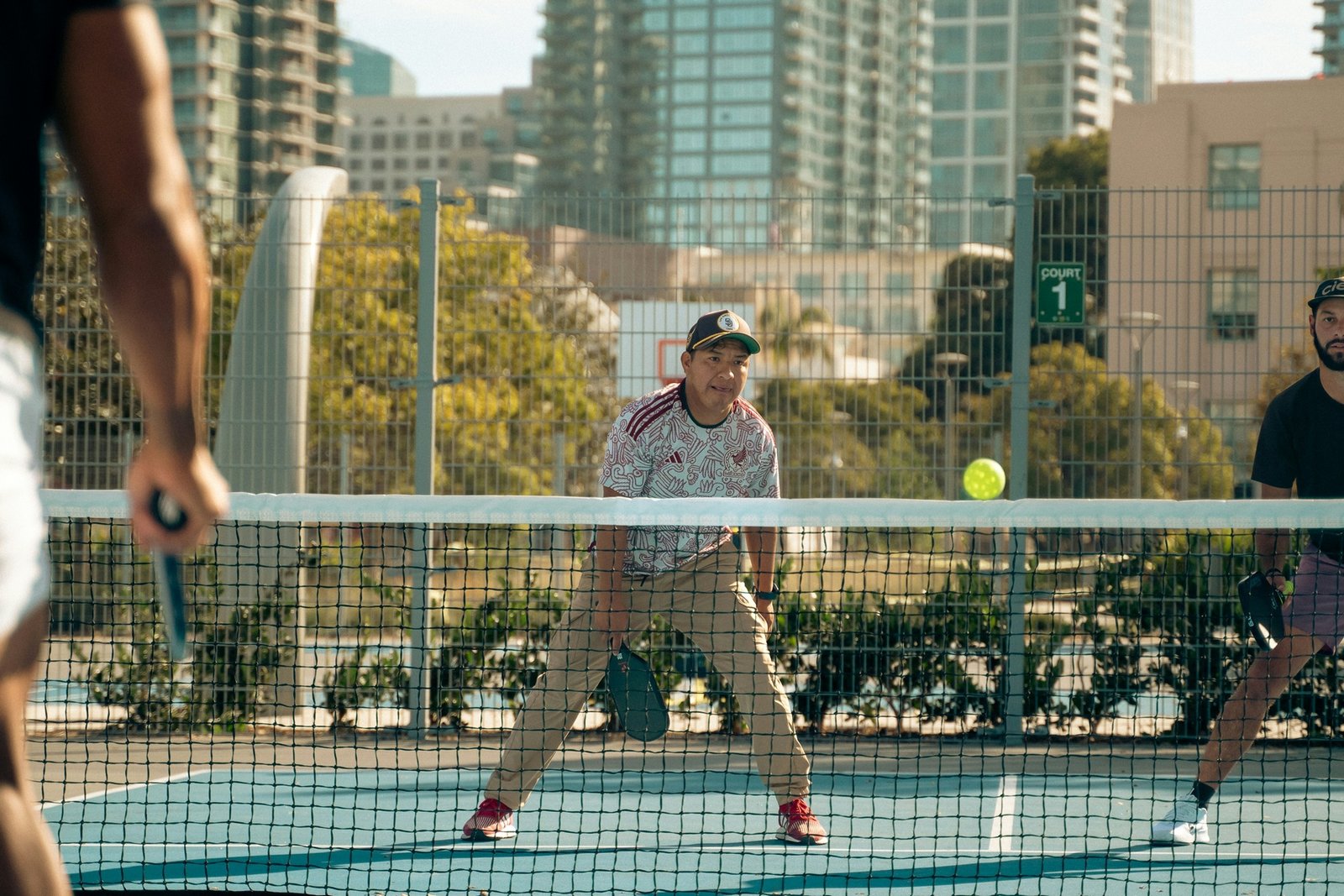Strategies for Precision & Control: Mastering the Soft Game in Pickleball
Share This Story:
Prefer to listen? Tap play below!
Win with Touch, Not Just Power
Master the soft game and dominate the kitchen, set the tempo, and drive your foes into errors.
What Is the Soft Game in Pickleball?
It is not about being weak, it is about having power
The soft game is defined as slow, controlled shots with dinks, drop shots, resets, etc., played mostly near the kitchen line, where ball control and patience can turn your opponent’s power into an opportunity to attack him or her later.
Why the Soft Game Works
Pressure without pace
- Forces opponents to bend, lift, and reach causing pop-ups.
- Reduces unforced errors from trying to overpower.
- Buys you time to move into better court position.
- Sets up high-percentage attack shots when your opponent slips up.

How to Play the Soft Game Effectively
Concentrate on touch, placement, and being very, very patience
- Begin from a stance that is low and athletic, with your paddle positioned in front of you.
- Maintain a relaxed and soft position by gripping only loosely (3–4 out of 10).
- Contact the ball out in front, ideally around knee height.
- Use a short, smooth swing with little wrist movement.
- Aim for the kitchen, keep the ball low and slow.
- Maintain consistency over aggression, wait for your opportunity.
Key Shots in the Soft Game
Your soft-shot arsenal
- Dink: A short, arcing shot over the net, landing in the kitchen.
- Drop Shot (3rd or 5th): A soft shot from the back or midcourt into the kitchen.
- Reset: A soft block or push to neutralize fast balls and regain control.
These shots force your opponent into low, defensive positions, perfect for setting up the next move.
Common Mistakes
Hitting Too Hard
Power turns soft shots into attackable ballsPlayers often flick or jab at the ball, sending it too high or deep. Relax your grip. Think of “lifting” the ball, not “hitting” it. Smooth, slow paddle movement is key.
Popping the Ball Up
High balls invite hard volleysA common error is adding too much lift or catching the ball too late. Contact the ball early and out in front. Keep your paddle face slightly open and use minimal motion to guide the ball over.
Playing the Soft Game Too Early or Too Long
Know when to reset and when to attackSome players overcommit to dinking and miss chances to be aggressive. Watch for pop-ups or weak dinks then strike. Mix softness with well-timed attacks to stay unpredictable.

Footwork and Positioning for the Soft Game
Stability equals control
- Stay low with knees bent and weight on the balls of your feet.
- Keep your paddle out in front, no swinging from the side.
- Use small, balanced steps to adjust at the kitchen line.
Good footwork allows for better paddle control and cleaner shot execution.
Drills to Improve Your Soft Game
Practice makes your hands softer
- Kitchen Dink Drill: Rally with a partner crosscourt using only dinks.
- Drop Shot Ladder: Practice 3rd and 5th shot drops from various court depths.
- Reset Drill: Have a partner feed fast balls; practice resetting softly into the kitchen.
- Target Dinks: Aim for cones or markers to build precision.

Mindset: Patience Wins the Soft Game
Don’t rush the rally, own it
The soft game isn’t about winning fast. It’s about creating space, wearing your opponent down, and forcing mistakes. Stay patient, stay composed, and wait for the right ball to finish the point.
Other Articles
Pickleball Tips for Playing with Hearing Loss
Pickleball Tips for Playing During Pregnancy
Pickleball Tips for Playing with Disabilities
Pickleball Tips for Playing with Injuries
Pickleball Tips for Playing in Humid Conditions
Pickleball Tips for Playing in High Altitude
Pickleball Tips for Playing on Wet Courts
Pickleball Tips for Playing at Night
Pickleball Tips for Playing in Cold Weather

